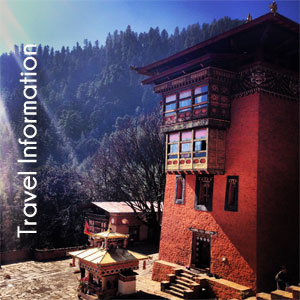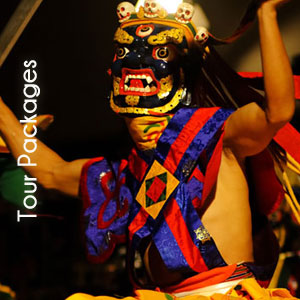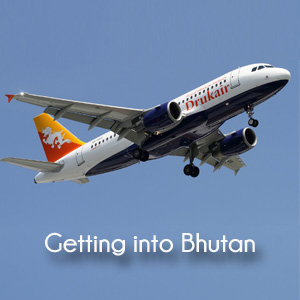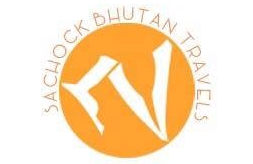With area of 2,067sq.km and population of 104,214 as of 2010 is the capital and largest city of Bhutan, the district became the capital in 1961. The city was developed by 3rd king Jigme Dorji Wangchuck to replace the ancient capital of Punakha. At present the city sprawls across the western slopes of the wang Chhu River. Due to rapid expansion and migration the city has resulted in considerable rebuilding in and around also mushrooming suburban development elsewhere. One could see the beautiful traditional styled houses with Buddhist paintings and designs to be required by regulations. Thimphu features a monsoon subtropical highland climate with mild summers and relatively cool winters.
Memorial Chorten:
Located on doeboom lam in the southern central part of the city, the chorten was built in 1974 to honour 3rd king of Bhutan, Jigme Dorji Wangchuck (1928-1972) by the king’s mother, Her Majesty the Queen Ashi Phuentsho Choden Wangchuk. Unlike other chortens it does not enshrine the mortal remains of the king. The king when he was alive wanted to build “a chorten to represent the mind of the Buddha”. It’s been designed to present it as “one of the most visible religious structures in Thimphu” one could Meet the elderly generation in circumambulation at the National Memorial Chorten.
Tashichho Dzong:
Trashichho Dzong is a Buddhist fortress on the northern edge of the city. Seat of the Druk Desi, the head of bhutans cival government in the past. It’s been attached with the kingships since the creation of monarchy in 1907. It was originally built in 1216 by Gyalwa Lhanangpa where Dechenphodrang now stands. After that Lam Phajo Drukgom Zhipo, who first brought the drukpa Kagyu Lineage to Bhutan, took it over. In 1641 Zhabdrung Ngawang Namgyal took it from Lam Phajos descendents, finding it small and keeping it for the monks built another one for the administration. Have been destroyed several times by fires and earthquakes King Jigme Dorji Wangchuk had it completely renovated and enlarged over five years after he moved the capital to thimphu in 1952 in traditional style using neither nails nor written plans. Tashichhodzong houses some ministries, His Majesty’s secretariat, and the central monk body.
Simtokha Dzong:
Located about three miles south of the capital Simtokha Dzong was built by Zhabdrung Ngawang Namgyal in the year 1629. An important historical monument and former Buddhist monastery, today it houses one of the premiers Dzongkha Language learning institutes.
Changangkha Lhakang:
Is perched on the ridge above central thimphu regularly hums with pilgrim activity. The site was chosen by Lama Phajo Drukgom Shigpo. The temple is considered the spiritual home of children born in the chang valley.
Taongthong Dewachen Nunnery:
It was established in the year 1976 by 16th emanation of Thangtong Gyalpo, Drubthob Rikey Jadrel. at Zilungkha in Thimphu, this follows the Nyingma and the Shangpa Kagyu traditions. One may interact with nuns who have devoted their life to spirituality and Buddhism.
National Library:
The national Library was established in the late 1960’s under the patronage of HM Queen Ashi Phuntso Choden (1911-2003) with the primary objective of collecting and preserving mainly ancient Bhutanese written and printed resources. It accommodates a large and steadily growing collection of manuscripts, books, scriptures and written documents as well as a large number of handcarved wooden blocks for printing traditional religious books. The library also holds a representative collection of English and western language books mainly related to the Himalayas, Bhutan and Buddhism.
Institute for Zorig Chusum:
The establishment of this institute was ordered in 1680 by Zhabdrung Ngawang Namgyal to instruct and sharpen the skills of thirteen traditional arts which was originally catagorised by the 4th Desi Tenzin Rabgyal(1680-1694). One could enjoy the practice of the following arts by the future artists: – Paper making, wood, slate and stone carvings, blacksmithing, clay arts, paintings, bronze castings, woodturnings, weaving, silver and goldsmithing, cane, needle and bamboo works.
Institute of traditional medicine:
In 1967 the king directed the health department to establish traditional medicine services for the welfare people and to preserve the Bhutanese traditional culture. The institute dispenses traditional medicines produced in its laboratories from minerals, animal parts, precious metals, gems and plants.
Sangaygang :
North West of the Thimphu Valley is the popular spot or famous for the dating and taking a walk around the blue pines, it’s around miles drive from the Thimphu valley. The place is ideally located uphills with good motor road to access across the hills, which gives elderly and sporty people a pleasure for a walk and jog uphills from the base area. The place gives the clear and beautiful view of the entire Thimphu valley. One must take a shot.
Buddha Point:
The gigantic Shakyamuni Buddha statue is under construction in the hill top overlooking the Thimphu valley. A short drive from the town where one could capture a good overview of the thimphu valley. It will be one of the largest Buddha statues in the world, at a height of 169 feet (51.5 meters).
Thimphu Tshechu:
The sacred dances or masked dances are based on the incidents from the life of the 9th century Nyingmapa teacher Padmasambawa and other saints. Thimphu Tshechu is one of the biggest of the tshechus in terms of participations and audience. Large markets also congregate at the fair locations, leading to brisk commerce. Apart from enormous performances one best attraction is the Wang Zhey, a Folk Dance from the Thimphu valley which draws a large number of tourists.

Bhutan Travel Info
Bhutan Travel tips, Daily Tourist Tariff, Bhutan Visa Information, Tour payment regarding your tour booking to Bhutan. Click on the link below to know more.
Learn more >>

Tour Packages
Travel to Bhutan with Sachock Bhutan Travels. We, at Sachock offers Cultural tours, Trekking Tours including the World's toughest Trek Snowmen Trek and colorful Festival tours of Bhutan.
Learn more >>

Getting into Bhutan
Travelling to Bhutan can be accessible by Air, to Paro(the only international airport in Bhutan connecting with Indian Cities, Nepal, Bangaldesh, Thailand & Singapore) & Road through Southern border towns of Phuentsholing, Gelephug and Samdrup Jongkhar.
Learn more >>

Sachock Bhutan Travels, P.O Box No: 1304, Karma Khangzang, Thimphu : Bhutan
Phone # (+975) 77177717 / 77210443 : Tele-Fax (+975) 2 333 881
Email: [email protected] / www.SachockBhutanTravels.com
Sachock Bhutan Travels, Copyright © 2025. All Rights Reserved.






